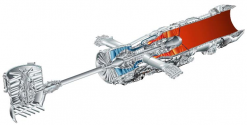China should really not be investing in STOVL fighters. The world probably shouldn't, but the UK seems to have an obsession ever since the harrier. STOVL shortens the distance a fighter can travel considerably, since it burns so much fuel going vertical. In a modern battlefield that focuses on long range ballistics. You have to bring your carrier considerably closer to missile range since your planes can't fly as far. Yes you benefit from a smaller and cheaper carrier at the risk of losing distance. It's just a bad idea when China has hypersonics that can reach out and touch you. Against opponents that aren't USA and China I guess it's fine, but China isn't gearing up for war with countries that aren't USA. So STOVL is nothing but a liability.
*Edit: When I say shouldn't I mean shouldn't on their own. If for some weird reason Saudi Arabia suddenly wants to buy the Type 076 but insists on F-31s in a STOVL configuration and will pay billions for it's development. Then sure why not. But China shouldn't do it on it's own. Just like USA wouldn't have done it without the Harrier obsessed British people.

